Vegan Globetrotter is supported by our audience. When you purchase through one of our links, we may earn a small affiliate commission. As an Amazon Associate I earn from qualifying purchases. Your cost is not affected.
==================
Is Whole Grain Pasta Healthier?
Whole grain pasta is high in dietary fiber, which may help promote regularity, prevent cancer, and lower cholesterol.
Although regular and whole-grain pasta has the same preparation method and can be used interchangeably in recipes, whole-grain pasta has fewer calories. Since whole grain pasta contains more fiber, vitamins, and minerals than regular pasta, it also provides you with more energy.
While whole wheat flour is a common material, some other grain varieties are used to prepare healthy whole grain pasta. It includes products made from corn or brown rice. Moreover, as an alternative to traditional pasta, you can easily find spelt or buckwheat pasta, offering a distinctive and nutty flavor along with a range of essential nutrients. So is whole grain pasta healthier?
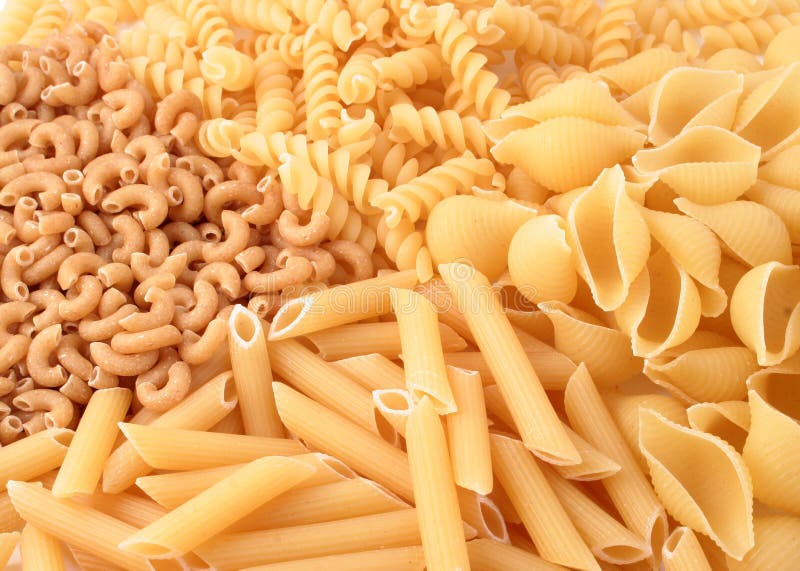
Whole Grain vs. Refined Pasta
Traditional pasta is made from refined flour, like wheat flour. During the process, you strip the grains of their bran and germ, which, although it gives the flour a fine texture, alter the grains’ nutritional content. On the flip, whole grain pasta also includes flour, but without processing the grains much.
Whole grain pasta retains most of the bran and germ, giving it a hearty texture. If you want to identify whole grain pasta, make sure to read its nutritional label. The first item should be “whole-wheat flour.”
Here’s a comparison of nutrients found in whole grain and refined pasta:
| Nutrients | Whole Grain Pasta | Refined Pasta |
| Calories | 174 | 220 |
| Protein | 7.5 | 8.1 |
| Carbs | 37 | 43 |
| Fiber | 6 | 2.5 |
| Manganese | 97% | 23% |
| Fat | 0.8 | 1.3 |
| Copper | 12% | 7% |
| Selenium | 52% | 53% |
| Folate | 2% | 26% |
| Magnesium | 11% | 6% |
| Thiamin | 10% | 26% |
| Riboflavin | 4% | 11% |
| Niacin | 5% | 12% |
| Iron | 8% | 10% |
Still wondering if whole grain pasta is healthier? Let’s look at the benefits of whole grains.
Benefits of Whole Grains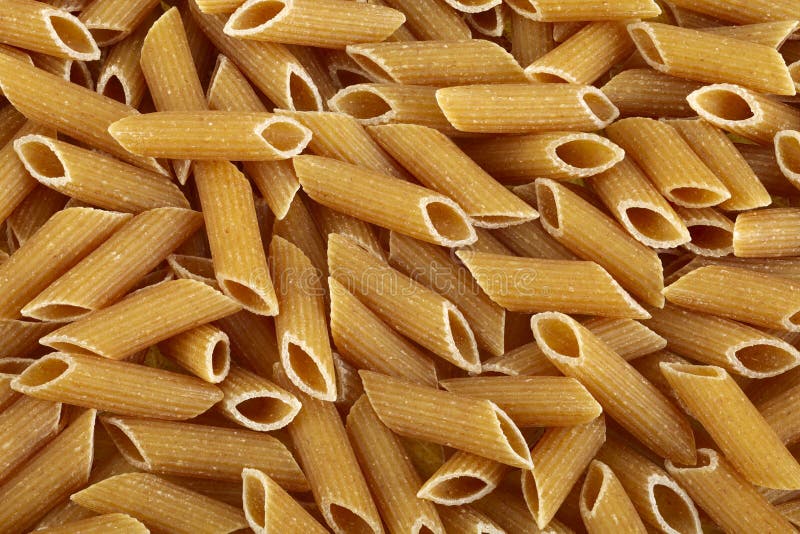
When you are consuming whole grain pasta or other wheat products, it is incredibly beneficial for overall health. If you love pasta, you do not need to renovate your diet to make significant changes. Switching to whole grain pasta can provide you various benefits, including:
· Provides Essential Minerals and Vitamins
All grains contain a high amount of vitamins, carbohydrates, and minerals. Whole grains include essential nutrients, including antioxidants, protein, iron, zinc, vitamin B, copper, magnesium, folic acid, and selenium.
These nutrients and minerals are essential for your body and enhancement its functionality. They play a crucial role in improving your immune system, promoting bone health, and relieving inflammation. Moreover, they are also great at processing calories.
· Promotes Heart Health
Whole grains are also good at promoting your heart health. Research has indicated that people who consume an appropriate amount of whole grains are lower at risk of developing cardiovascular disease. In fact, you can include whole grains in your diet to lower cholesterol levels, insulin levels, and triglycerides fat in your body).
· Helps Prevent Diabetes
Since whole grains are also grain for maintaining insulin levels, it helps improve glucose control in your body. It means incorporating whole grains in your daily diet can lower the risk of developing type-2 diabetes.
However, since whole grains contain essential parts, you may find them complex to digest. This assists in slowing down the digestive process, preventing spikes in blood sugar.
· Improves Digestive Health
Whole grains are an impressive source of fiber. But the fiber in whole grains cannot be found in enriched or refined grains. It is a crucial nutrient that helps to regulate bowel movement, lowering inflammation, relieving constipation, and decreasing diarrhea.
A healthy digestive tract and supported bowel movement are essential in preventing complications. In addition, if your bowel movement is healthy, it will decrease the strain on your intestine to avoid issues like diverticular disease.
· Weight Management
Again, the fiber in whole grains helps to keep your weight healthy and makes you feel faster. It helps conditions such as the decreased need for insulin, reduced caloric intake, and extensive fullness. But keep in mind that whole grain pasta isn’t the only component to help weight management. So, you must pair it with lower cholesterol intake and fat. Your diet and its components work as a team to keep you healthy.
· Lower the Risk of Cancer
There is evidence that whole grains are helpful in cancer prevention. Some studies indicate that people who consume an appropriate amount of whole grains have a lower risk of developing colorectal cancer. Moreover, high consumption of whole grains can also help prevent gastrointestinal tract cancer.
In fact, the variety of vitamins present in whole grains provides you with various protections, including oxidative damage, hormone-related cancers, etc.
Benefits of Whole Grain Pasta
Also, in addition to the above benefits, some additional benefits that whole grain pasta offers include:
· Provides Energy
Since whole grain pasta is rich in carbohydrates, a one-cup serving contains about 37g of carbohydrates. According to the Department of Agriculture Dietary Guidelines, up to 65% of our calories come from complex carbohydrates, like vegetables, whole grains, and legumes.
We need a lot of macronutrients, like carbohydrates, daily to keep our bodies functioning well. Moreover, carbohydrates are also a rich energy source for red blood cells, muscles, and the nervous system.
· Nutrient-Rich
Another benefit of whole grain pasta is its many vitamin B and essential minerals, such as selenium, magnesium, copper, and manganese. However, enriched pasta lacks these vital nutrients. The B vitamins present in whole-grain pasta are crucial for energy metabolism and a healthy nervous system.
While, copper is essential to create connective tissues, enhance the functionality of the nervous, blood cells, immune, and cardiovascular systems. Similarly, selenium helps the immune system and thyroid glands. The presence of magnesium is essential for regulating blood pressure and bones health. And lastly, manganese helps form proteins, carbohydrates, and bone formation.
· Cholesterol-Free and Low Sodium
If you are suffering and bound to keep your cholesterol levels in check, whole grain pasta is your best food. It is cholesterol-free and deficient in sodium.
· Balanced Diet
Whole grain pasta is perfect for keeping your everyday diet balanced. You combine it with lean protein and vegetables, and you are well on the road to hit your dietary goals.
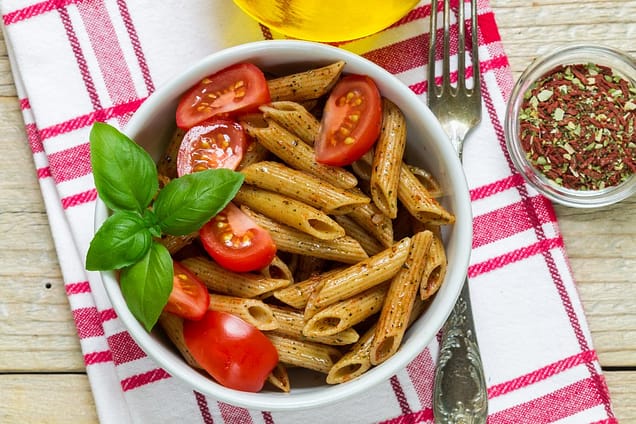
Types of Whole Grain Pasta
Because of its versatility and affordability, it’s no wonder why pasta is so popular. Some common types of whole-grain pasta that you shouldn’t miss are:
1. Buckwheat Pasta
Technically not a grain but grass; buckwheat pasta is gluten-free and fabulous for people with celiac disease. Also known as “Soba Noodles,” you ground buckwheat seeds into a dark flour to make pasta.
These dark brown-gray color noodles offer a nutty flavor. You can also add wheat flour to ground its seeds. However, if you are looking for gluten-free pasta, check the label to ensure it doesn’t contain wheat flour.
Benefits
- One cup of buckwheat pasta contains up to 0.4g of manganese. It is excellent for bone health, wound healing, and glucose metabolism. It also helps your nervous system.
- Containing vitamin B-1 (thiamin) is excellent for cell growth and functionality and energy metabolism. Thiamin also helps prevent cardiovascular issues, such as muscle weakness, enlarged heart, confusion, and memory loss.
- Buckwheat pasta has a lower GI response as compared to white wheat bread. Also, it assists in slowing down the digestion process of carbs to prevent spikes in blood sugar levels.
- It is a prebiotic food. It means indigestible fibers to feed prebiotics. These are good bacteria that help prevent harmful bacteria and microorganisms.
2. Whole-Wheat Couscous
It is tiny, circular pasta and originates from the Middle East and North Africa. The whole-wheat couscous pasta is becoming more popular in America as well. It is often made from refined wheat flour, though, but you can find whole-wheat couscous.
When making whole-wheat couscous pasta, you generally boil or steam it in water and top it with stews or flavor with many spices and herbs. You can get it from the grains section of grocery stores.
Benefits
- Whole-grain couscous is an excellent source of fiber, which is good for you in plenty of ways. It prevents spikes in blood sugar levels.
- One of the significant nutrients found in couscous is selenium. It is an essential mineral and powerful antioxidant, helping your body repair damaged cells and prevent inflammation.
- A review of 69 studies showed that high selenium could prevent certain cancers. Intake of an appropriate amount of selenium and vitamin C and E may help lower the risk of lung cancer.
- Couscous whole-grain pasta is also beneficial in boosting your immune system. The antioxidants in couscous help boost immunity and reduce inflammation.
- In addition, pasta is also a great source of plant-based protein, essential for your body.
3. Brown Rice Pasta
Brown rice pasta is among the most popular whole-grain, gluten-free pasta because of its chewy texture and mild flavor. Both of these components are the perfect substitute for traditional pasta. It is also a good source of fiber and contains up to 3g of fiber in one cup.
Moreover, it also contains essential micronutrients, such as selenium, manganese, and magnesium. The bran in brown rice pasta is packed with potent compounds and antioxidants that help fight off oxidative damage and promote better health.
Benefits
- Brown rice pasta contains antioxidants, minerals, and fiber that can help prevent chronic disease.
- Switching from refined pasta to brown rice pasta may help you with weight loss by keeping you fuller for more extended periods and making you consume fewer calories.
- Brown rice is good for your heart health, and brown rice pasta rich in beneficial compounds can lower the risk of heart disease.
- It is an excellent choice for people with diabetes. Studies showed that people with type-2 diabetes experienced a significant decrease in post-meal hemoglobin A1c after eating brown rice than white rice.
- Brown rice pasta is naturally gluten-free, so if you have a specific autoimmune disease, brown rice pasta may help.
4. Kamut Pasta
Also called Khorasan wheat, it is an Egyptian grain. Kamut primarily consists of big kernels that you can ground to flour. You can also make it a substitute for wheat flour in baking items and add it to soups or stews. In addition, Kamut generally contains gluten, though, but tolerable if you are allergic to the mixed version of wheat. It provides a more prosperous and buttery flavor. You can find it in various shapes, including penne, fusilli, and spaghetti.
Benefits
- Kamut is a phenomenal source of whole fiber, which helps strengthen your tissues. Also, it is essential for oxygen transportation around the body and the enhancement of the immune system.
- It also contains a major amount of protein, which helps keep your cholesterol levels low and energy levels high.
- Selenium and manganese in Kamut help support hormone balance. Selenium produces thyroid hormones, while manganese is excellent for processing sex hormones.
- Kamut also contains zinc, which boosts the immune system and maintains thyroid health.
5. Quinoa Pasta
As one of the best health foods globally, quinoa pasta is gluten-free, rich in protein, and contains just enough amounts of 9 essential amino acids. Besides that, it also contains B vitamins, calcium, potassium, magnesium, fiber, phosphorus, and numerous beneficial antioxidants.
Not a grain, but the seeds of a plant found in South America; quinoa is often called a whole grain because of its nutritional facts. It is similar to couscous in shape and size, but you can ground it into flour to make it gluten-free. Quinoa pasta is also superior in containing iron, proteins, and phosphorous than traditional pasta.
Benefits
- Quinoa recently reached the superfood status because of the nutrition it contains, including all nine amino acids.
- It contains a high amount of plant antioxidants (flavonoids), offering several health benefits.
- Quinoa includes up to 16g of fiber per 100g, which is incredibly high – twice as high as most grains.
- It also contains soluble fiber, which helps reduce blood sugar levels, increase fullness, weight loss, and lower cholesterol levels.
6. Spelt Pasta
Another type of whole grain pasta is spelt pasta. A subspecies of wheat, spelt is an ancient grain. In terms of appearance, both wheat and spelt are similar, but the latter has a strong husk and different nutritional facts. Although in Europe, people have grown it for 300 years, it reaches the US in the late 1890s.
You can use spelt as a substitute for wheat flour in many recipes. It is rich in niacin and offers a nuttier flavor. Moreover, if a Mediterranean dish inspires you, it combines perfectly with feta cheese, olive, and tomatoes.
Benefits
- Spelt grains contain a long chain of molecules that help your body to digest the grains slowly. It has a medium GI, which means if you are allergic to high-GI carbs present in refined foods, you should consider incorporating spelt pasta in your diet.
- It is rich in B vitamins, which help break down and release energy from food. They also help keep muscles tissues strong.
- In addition, the presence of magnesium activates muscles and nerves to create energy in the body.
- It also includes iron, which is excellent for vital functions in our body, including concentration, providing oxygen to blood cells, and general energy.
7. Corn Pasta
Corn is an ingredient that contains grains and originates from Mexico. You can find a variety of pasta made from corn. If you have wheat allergy or celiac disease, corn pasta is perfect for you. In addition, you can easily find corn pasta in various forms, including fettuccini, spaghetti, or macaroni.
The taste of corn pasta is incredibly delicious, which is why it is popular among children. Corn pasta can range from white to yellow. However, since corn pasta is a bit mushy, I recommend avoiding using it in soups. You can combine it with peppers, spinach, or dry tomatoes.
Benefits
- It is gluten-free, excellent for people with some symptoms due to wheat allergy or celiac disease.
- Like many other kinds of pasta, corn pasta is also rich in fiber to keep your body healthy.
- The increased amount of fiber in corn pasta helps improve the digestive system. Consuming corn pasta may improve intestinal bowel movement.
- You can also avoid constipation by making corn pasta a part of your diet.
- It also helps improve the body’s metabolism system. Also, it means corn pasta is excellent to fasten the process to release energy from consumed food.
Final Thoughts
To the question “Is Whole Grain Pasta Healthier?” We respond, Yes! In fact, we encourage you to enjoy the various types of whole grain pasta often.. Many kinds of whole-grain pasta now exist. Each of them come with an array of health benefits. Ultimately, I hope we made it was clear if whole grain pasta is healthier. Do you have any other whole grain pasta on your list? Share with us in the comment section below.
Read More
Health Benefits of Eating Whole Grains (Healthline)
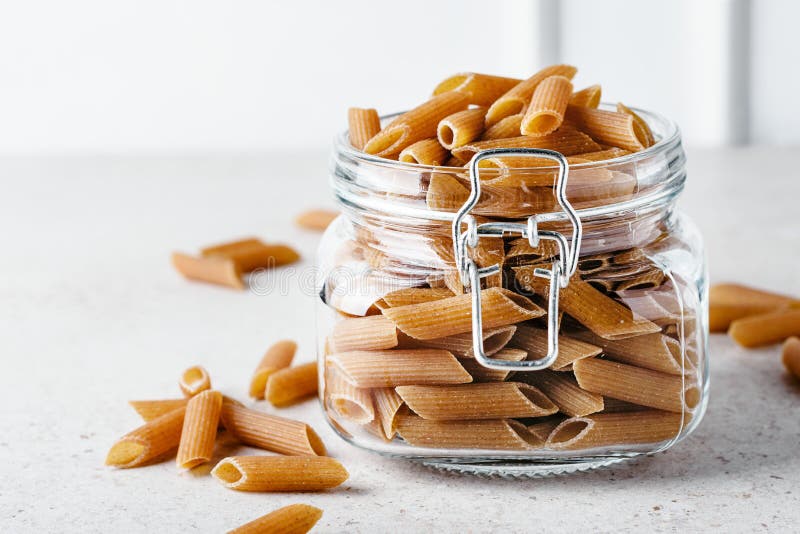

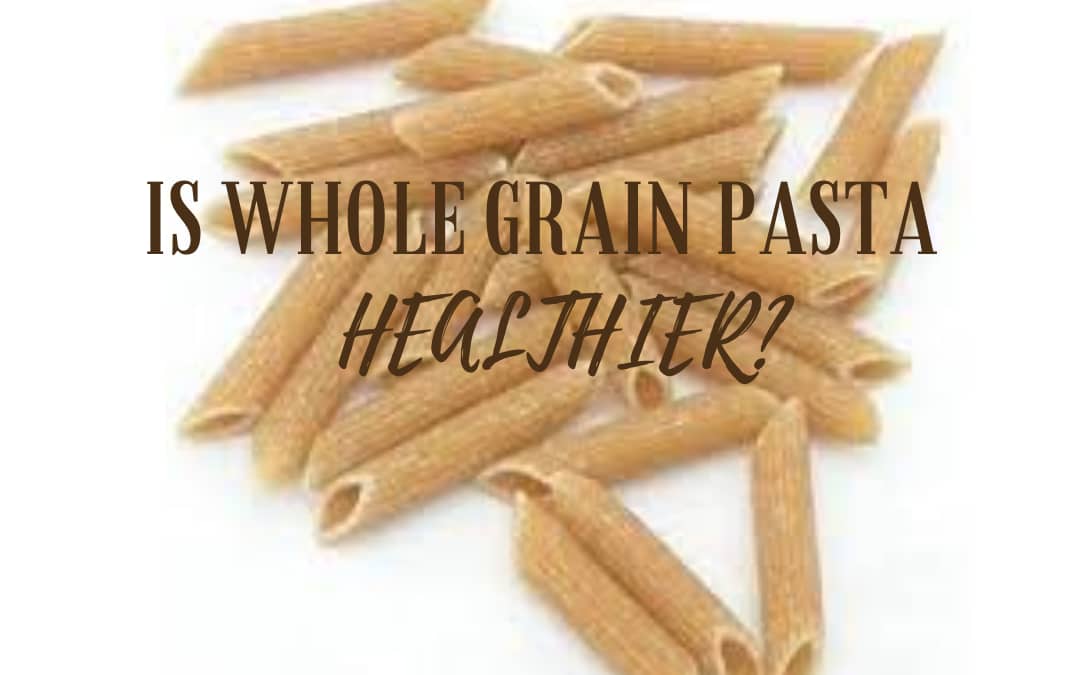



Don't miss out
when new recipes and information are added!
Join our newsletter for free recipes,
healthy living inspiration, and special offers
You have Successfully Subscribed!